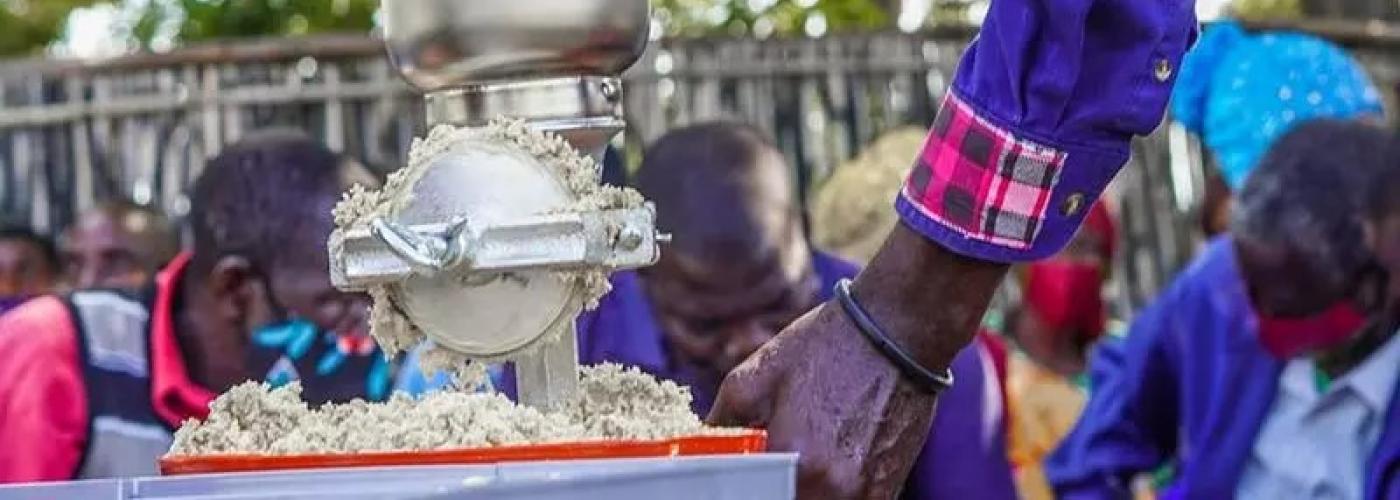How Do You Find “Common Ground” for Women’s Empowerment with the Private Sector?
Image

This post was authored by the Feed the Future Advancing Women's Empowerment activity and originally appeared on Agrilinks.
Experience has shown that the private sector is not always interested in or prioritizes the same results or development impacts USAID aims to achieve through their partnerships, including those around gender equality and women’s empowerment. While it may not always be easy, finding common ground is an essential part of creating alignment and shared value. Below are three ideas on how to identify and align private sector and development interests for inclusion and empowerment.
“You can’t fabricate the private sector’s desires. You need to find those who find it beneficial to their business to have women incorporated.” — Jorge Reyes, USAID/Honduras.
- Understand where the private sector has interests and finds it beneficial to incorporate women and youth. USAID Missions and implementing partners (IPs) need to do their part and research what’s really important to private sector partners; this means going beyond corporate social responsibility goals to understand what’s important for partners’ core business. This way, USAID can leverage where there is already interest and opportunity to incorporate and empower women and youth in partnerships. USAID and IPs also need to understand the private sector’s resources and capacity to know which activities are realistic and feasible. USAID/Honduras, through its Transforming Market Systems Activity, used a private sector landscape analysis to uncover this information, while USAID/Kenya took a different approach and conducted listening tours. The listening tours consisted of one-day regional workshops that helped clarify the different entities that existed in the region, their capacity and what type of interventions were appropriate, given the size of the actors. More information can be found in the upcoming USAID/Kenya Mission Profile.
- Highlight win-win solutions and additionality to demonstrate value in partnering with USAID. Sometimes, the private sector doesn’t see the potential for engaging women and youth, but USAID can help show them the shared value and benefits of considering new opportunities that include women and youth. The USAID/Guatemala Mission uses a phased gender analysis approach during cocreation to discuss gender gaps in areas like employment with the private sector, and then identify common opportunities and priorities for a win-win collaboration that address such gaps. In Colombia, the Mission was able to create additionality by listening and demonstrating how their gender strategy fit with Microsoft’s geographical interests — they showed that by including a gender lens to their planned expansion, there would be a greater impact (more information is available in the YouTube video). One additional lesson shared during the Latin America and the Caribbean (LAC) Learning Series was that there may be a need to educate and change the perceptions of long-term USAID partners who view USAID as the donor and, therefore, do not see an incentive to take on a bigger responsibility or investment.
- Outline common agreements and goals from the beginning. It’s important to have a shared baseline of expectations from the beginning, which helps to develop complementary activities between USAID and the private sector. USAID should encourage private sector partners to lead in setting goals and reporting based on the common goals and objectives of the partnership. This gives partners a sense of agency and shows that it is a collaborative effort.
“Try to find that place where profit meets inclusivity.” — Martha Albanese, USAID Bureau for Humanitarian Assistance (formerly with USAID/Colombia)
These examples show that finding common ground around elevating women and youth through private sector partnerships is possible. While private sector and agricultural systems contexts differ greatly across countries, these ideas and examples can help USAID Missions to build sustainable partnerships with the private sector to advance inclusion and women’s empowerment.

